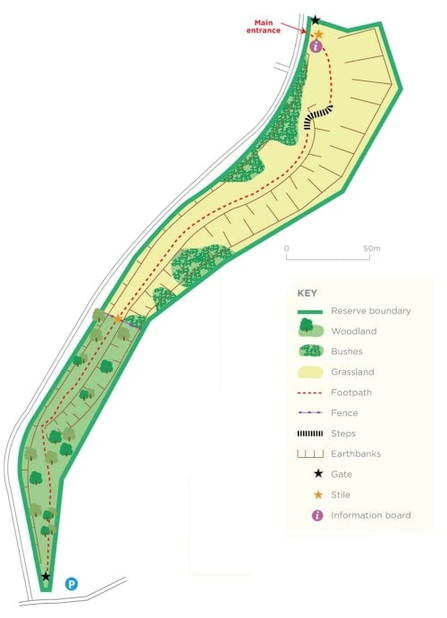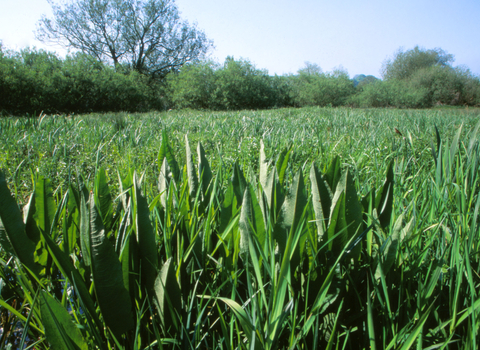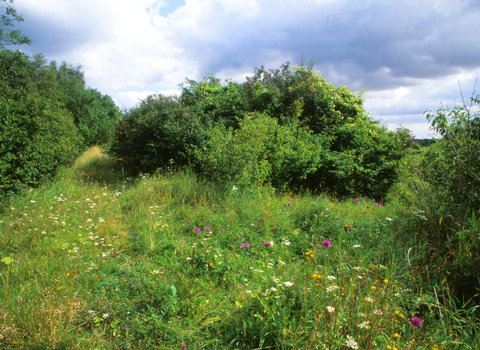Duke of Burgundy butterfly. Credit: Eleanor Dodson.
Location
Know before you go
Dogs
See our FAQ's for more information
When to visit
Opening times
Open at all timesBest time to visit
Spring and summer. Nearby attractions include Highclere Castle (7 miles), Ludgershall Castle (8 miles), Donnington Castle (9 miles), Finkley Down Farm Park (10 miles).About the reserve
Ham Hill is a tiny area of steeply sloping chalk downland strewn with wildflowers and offering great views. A path runs through it and a flight of steps leads to the top of the embankment. The reserve is part of a holloway (sunken track) dating back to Saxon or medieval times on the route from Hungerford to Andover. The banks are a designated Site of Special Scientific Interest (SSSI) for their rich variety of plants and wildlife.
The site is grazed with sheep. This controls the scrub that would otherwise crowd out the wildflowers.
In spring, cowslips, early purple orchids and violets provide food for the caterpillar of the Duke of Burgundy butterfly.
In July, look for the tiny, yellow-green, powerfully scented musk orchid, a nationally scarce species that is found in very few sites in Wiltshire. You may also find a few burnt-tip orchids. Twayblades, common spotted, fragrant and pyramidal orchids are scattered throughout the reserve. Birds such as yellowhammer nest in the bushes. Listen for the deep croak of roosting ravens. Look out for the rare Roman snail, Britain’s largest. Its spherical shell ranges from white to grey, has pale brown bands and grows up to 5cm across.



